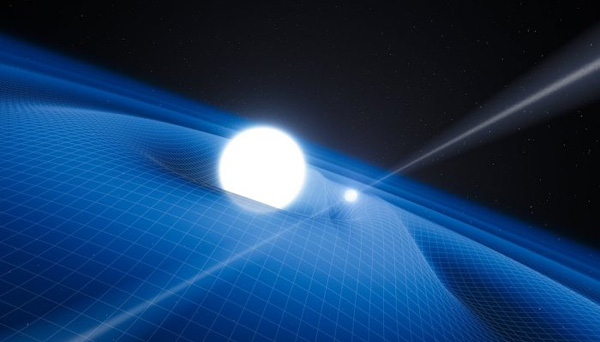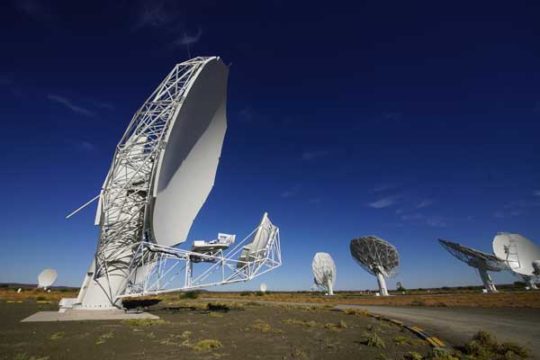Astronomers have used observations of a tight white dwarf-neutron star pair to confirm an aspect of Einstein's general theory of relativity.
Over a century ago, Albert Einstein predicted that massive rotating bodies slightly drag spacetime around them, just like a rotating bowling ball on a rug creates a tiny warp in the fabric. Now, for the first time ever, astronomers have detected and measured this frame-dragging effect in the strong gravitational field of a pair of distant stars. The result, published January 30th in Science, sheds more light on the binary’s evolution.
In 1918 Austrian physicists Josef Lense and Hans Thirring showed that frame-dragging by the Sun should produce a tiny extra precession, a spirograph-like progression of the planets’ orbits, known as Lense-Thirring precession.

NASA
They also concluded that this Lense-Thirring precession (not to be confused with the much larger perihelion precession of Mercury) is way too small to measure. That has changed over the past decade, as even-smaller frame-dragging by the rotating Earth has been detected in high-precision satellite experiments, such as NASA’s Gravity Probe B and the LAGEOS laser-ranging satellites.
Now, a team led by Venkatraman Krishnan (Swinburne University of Technology, Australia, and Max Planck Institute for Radio Astronomy, Germany) has found evidence of Lense-Thirring precession in the orbit of a strange binary system a few thousand light-years away in the southern constellation Musca, the Fly.
A Weird Pair
The stellar duo consists of a white dwarf and a slightly more massive, rotating neutron star companion, detected by its radio pulses and designated PSR J1141-6545. The pulsar and white dwarf are coupled in a 4.74-hour, oval-shape orbit that would almost fit inside our Sun.

ESO / L. Calçada
The system is one of only two neutron star-white dwarf binaries known where the white dwarf appears to be older than the neutron star. As the neutron star was a massive star before it went supernova, it probably transferred its outer layers to the white dwarf , spinning it up to an extremely fast rotation rate in the process.
The strength of the frame-dragging effect depends on the mass of the body and how fast it’s rotating, as well as the distance to the object being dragged. The rapidly spinning white dwarf thus “drags” on the pulsar, slowly rotating their oval-shape orbit in an effect about 100 times more pronounced than what has been measured by Gravity Probe B and other satellites.
The Parkes and UTMOST radio telescopes in Australia collected precise measurements of the neutron star’s radio pulses over almost 20 years. Krishnan and his colleagues used the pulse arrival times to reconstruct the slow change in the pulsar’s orbit, finding that frame-dragging had shifted the orbit by some 7 kilometers per year.
General Relativity Passes
The new result not only provides the first confirmation of Lense-Thirring precession beyond Earth’s orbit; it also sheds light on the binary’s history. The team estimates that the white dwarf spins around in less than 3 minutes. Most isolated white dwarfs rotate over hours rather than mere minutes, so this evidence aligns with the idea that mass transfer from the supernova progenitor spun up the white dwarf.

Govert Schilling
“This is a great result,” says Joeri van Leeuwen (University of Amsterdam), who was not involved in the research. “Of course it’s interesting that we learn more about the origin of this unusual system. But to me, the detection of the Lense-Thirring precession is the real exciting part of the research. It reveals a truly fundamental property of our universe, namely that space and time are being dragged around by rotating bodies.”
Coauthor Evan Keane (Swinburne University of Technology, Melbourne) expects that new and future radio observatories, such as Meerkat and the Square Kilometre Array, will discover more exotic binary systems like this one, adding that “we’ll be able to investigate many more effects predicted by general relativity.”
 0
0
Comments
You must be logged in to post a comment.